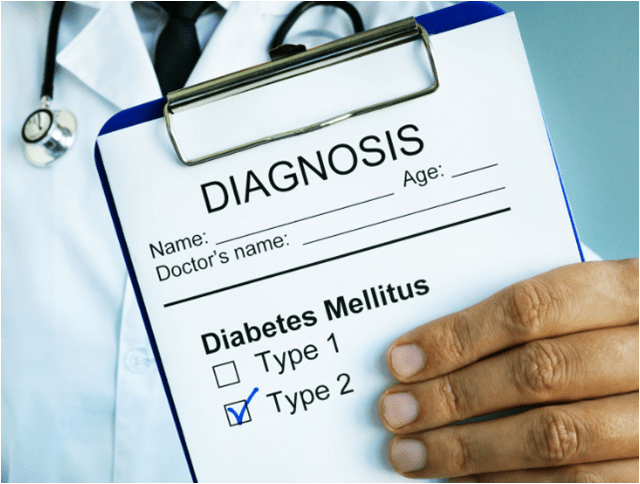Table of Contents
Diabetes is a condition wherein there is persistent elevation of glucose in the blood. The body can no longer effectively control the regular rise and fall of glucose in the blood. There are two main types of diabetes- the type 1 and type 2 diabetes. Diabetes type 1 and type 2 are serious chronic diseases that require the patient’s understanding; and cooperation if the diseases are to be controlled. These two types of diabetes affect 8% of the population. They play a major role in causing strokes, heart attacks and vascular disease. They are known to cause injury to kidneys, eyes, and other body parts.
Type 1 Diabetes: How It Works, Symptoms and Management
Type 1 Diabetes is sometimes called Juvenile Diabetes or Insulin-Dependent Diabetes Mellitus (IDDM). It usually is diagnosed sometime during a child’s adolescence and is managed by blood glucose control, exercise, nutritional support; and proper insulin management. Type 1 patients do not produce insulin; which is a hormone needed to convert food such as sugar and starch into necessary energy.
The symptoms of Type 1 diabetes are similar to those of Type 2 diabetics; with the exception that they occur in children and adolescents. Since they occur early in life, the symptoms come on quicker; and usually more dramatically than the symptoms that afflict adults facing Type 2 diabetes. Generally, before any blood tests are done, there are problems that are noticeable to parents.
These symptoms include an increased thirst accompanied by consuming large volumes of water, followed by increased urination, known as polyuria. Additionally, there is usually increased hunger that cannot be satisfied, along with a rapid onset of weight loss. At this point, parents usually take the child to the doctor for blood work and other laboratory tests. The tests show increased blood glucose as well as glucose in the urine. The high glucose is due to the inability of the pancreas to make insulin that allows the body to absorb glucose into the tissues for energy.
Blood Glucose
The glucose in the urine is the body’s way of attempting to rid the system of the excess blood glucose; but it is ineffective at keeping tissues supplied; with the glucose needed to form the fuel to keep all systems running normally. If the symptoms go unnoticed or untreated; the patient will eventually experience diabetic ketoacidosis from the breakdown of fat and adipose tissue in the body’s attempt to feed itself. This can lead to diabetic shock and death; so it is extremely important for parents and guardians to closely watch their child’s eating and drinking habits, and take note of any changes; even if they do not seem important at first glance. Children with Type 1 diabetes tend to become gravely ill in a matter of days; due to their fast metabolism and need for excess energy to fuel normal growth.
Because Type 1 diabetics must administer insulin via injections or an insulin pump; it is their responsibility to monitor blood glucose levels, and then appropriately administer insulin. In order to properly manage Type 1 diabetes; the healthcare professionals, including the physician and nutritionist or dietician; must work closely with the patient to decide what the proper amount of insulin is to keep diabetes in check and blood glucose under control at safe levels.
Exercise
In addition to keeping blood glucose at safe levels and insulin injections at their proper time; exercise is also an important part of managing Type 1 diabetes. Aside from all of the benefits of exercise; diabetics also are rewarded with an increasingly steady blood glucose level from regular exercise routines. To keep up exercise on a daily basis; remember to try new routines so boredom does not get the best of you.
Nutrition is probably the key to managing Type 1 diabetes. There are many schools of thought regarding proper nutrition for Type 1 diabetics; but the most important aspect of a diet is that it does not become boring; and leave you feeling trapped by monotony. The best way to avoid being roped into a bland; tasteless diet is to learn how to read nutrition labels as well as learning how to find interesting recipes and break them down into their nutritional elements in case they do not provide the nutritional information. Learning how to break foods into their components will give you the freedom to eat almost anything you desire; as long as you know how to fit it into your nutrition plan.
Diabetic Management
Another important, but generally overlooked role in diabetic management, is emotional support for both the child and the parents. It is important for both groups of people to be able to consult with others; who understand and can sympathize with the daily necessities that go hand in hand with diabetic management. That is, the multiple finger sticks for blood glucose monitoring, the carbohydrate counting; and the insulin injections that are all necessary when managing diabetes. The American Diabetic Association (ADA) has many support groups that help Type 1 and Type 2 diabetics; along with helping their parents or caregivers. Type 1 diabetes is a serious disease; but if managed correctly, does not have to interfere with the enjoyment of life.
Type 2 Diabetics: How It Works, Symptoms and Management
Unlike Type 1 diabetes, Type 2 diabetes generally affects people during mid-life, usually in their forties or fifties. However, because of the rise in childhood obesity, more and more children are becoming diabetic as well. Type 2 diabetes used to be known as Non-Insulin Dependent Diabetes Mellitus (NIDDM); but the ADA determined this was misleading since some people suffering with Type 2 diabetes do require insulin if the diabetes cannot be controlled with nutritional changes; exercise and oral medication. Type 2 diabetes can be reversed by diet and weight loss; and with this change in lifestyle, it need never reappear.
Unlike people with Type 1 diabetes; Type 2 diabetes sufferers make insulin, but they either do not make a sufficient amount, or their body has become insulin resistant and the receptors for insulin; do not absorb the insulin from the blood. There are many schools of thought on the reason for the insulin resistance; but the majority of physicians and nutritionists believe that the diet of many Type 2 patients is higher in simple carbohydrates than normal; thus making the insulin receptors less available to insulin because they are blocked by high amounts of blood glucose. Similarly; if a person eats large amounts of simple sugars; the insulin secreting cells in the pancreas are unable to keep up with a sufficient amount of insulin necessary to allow cells to absorb the glucose in the blood and use it for bodily fuel.
Symptoms
The symptoms of Type 2 diabetes are not as clear cut as the symptoms of Type 1 diabetes; and many people with Type 2 diabetes do not realize they are diabetic until they suffer some of the more serious side effects of the disease. Obesity is a common precursor to Type 2 diabetes; and most people who are obese with diabetes can control it by simply losing weight, following a healthy diet and adopting a regular exercise regimen.
There are symptoms, however, not all Type 2 diabetics are obese. Excessive thirst, urination or polyuria and weight loss are common symptoms in Type 2 diabetics; as well as Type 1 diabetics. Also, blurry vision, atherosclerosis and kidney problems are other serious symptoms of diabetes. Retinopathy occurs when the eye does not get proper perfusion of blood; due to circulation problems attributed to Type 2 diabetes. Atherosclerosis is caused by high levels of glucose in the blood; causing plaque buildup on the arterial walls, which causes narrowing and can lead to a plethora of heart ailments.
Other Factors
Polynephritis is disease of the kidneys caused by the excessive amounts of uric acid; glucose and proteins that build up in the blood because they are unable to be absorbed by the tissues that would normally use them because of high levels of blood glucose. These are all serious problems that can be avoided by avid management of Type 2 diabetes by diet; exercise and consultation with your physician if any problems similar to the aforementioned ailments are noticed.






 I love to write medical education books. My books are written for everyone in an easy to read and understandable style.
I love to write medical education books. My books are written for everyone in an easy to read and understandable style.